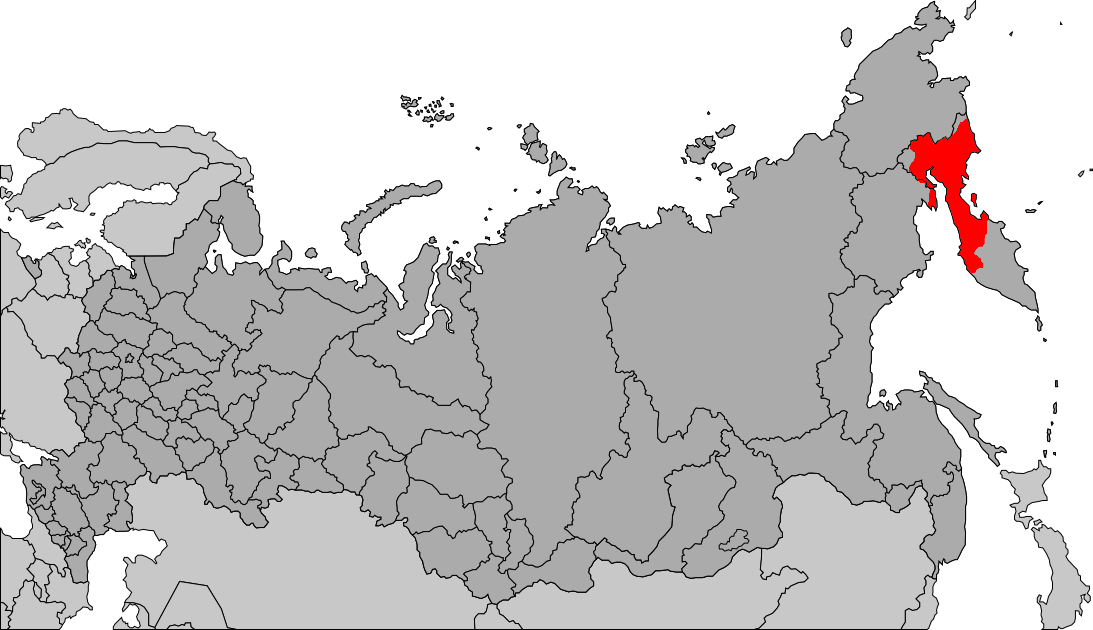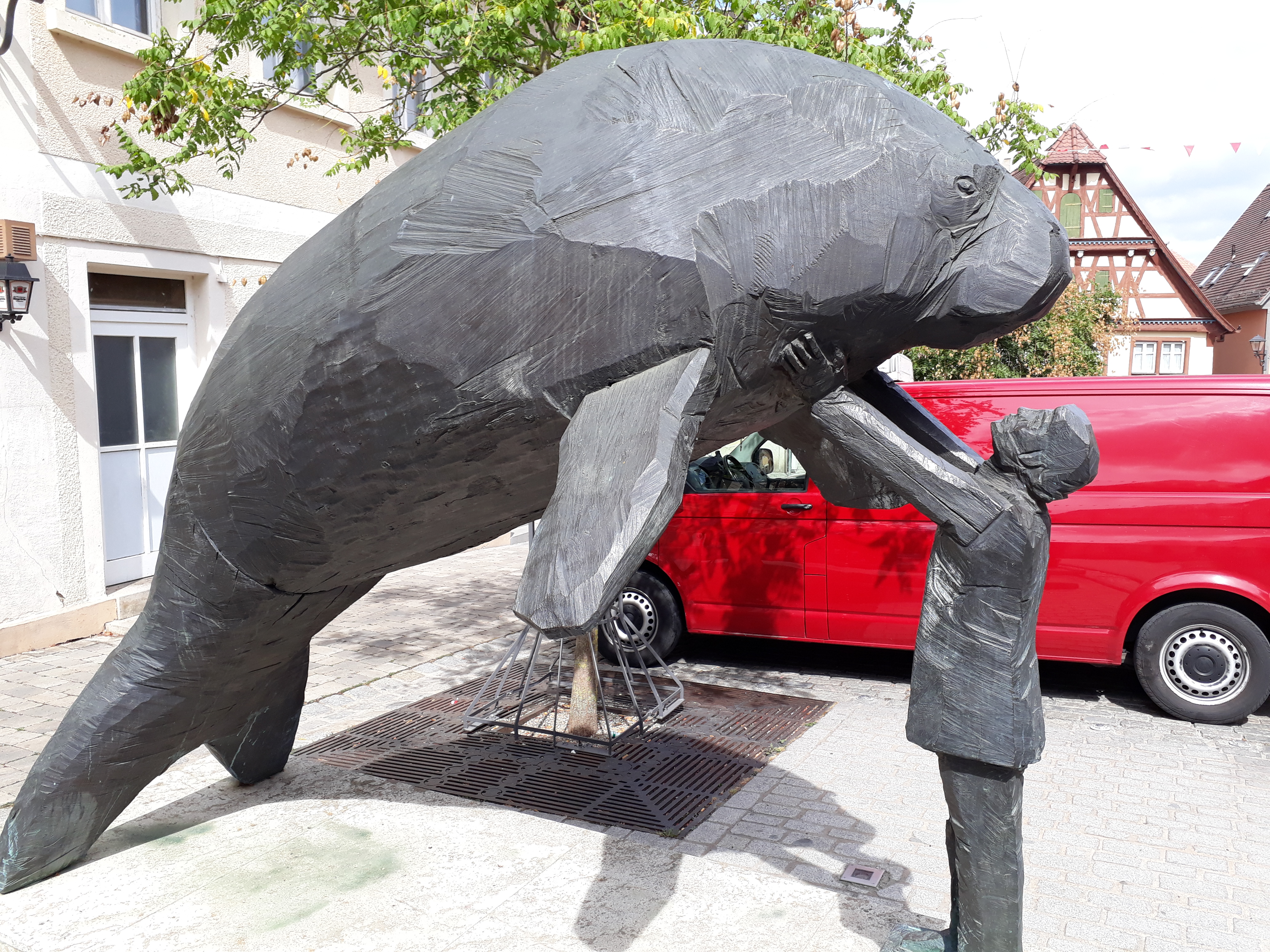|
Itelmens
The Itelmens (Itelmen: Итәнмән, russian: Ительмены) are an indigenous ethnic group of the Kamchatka Peninsula in Russia. The Itelmen language is distantly related to Chukchi and Koryak, forming the Chukotko-Kamchatkan language family, but it is now virtually extinct, the vast majority of ethnic Itelmens being native speakers of Russian. A. P. Volodin has published a grammar of the Itelmen language. Native peoples of Kamchatka (Itelmen, Ainu, Koryaks, and Chuvans), collectively referred to as Kamchadals, had a substantial hunter-gatherer and fishing society with up to fifty thousand natives inhabiting the peninsula before they were decimated by the Cossack conquest in the 18th century. So much intermarriage took place between the natives and the Cossacks that ''Kamchadal'' now refers to the majority mixed population, while the term ''Itelmens'' became reserved for persistent speakers of the Itelmen language. By 1993, there were less than 100 elderly speakers ... [...More Info...] [...Related Items...] OR: [Wikipedia] [Google] [Baidu] |
Itelmen Winter Dwelling
The Itelmens (Itelmen: Итәнмән, russian: Ительмены) are an indigenous ethnic group of the Kamchatka Peninsula in Russia. The Itelmen language is distantly related to Chukchi and Koryak, forming the Chukotko-Kamchatkan language family, but it is now virtually extinct, the vast majority of ethnic Itelmens being native speakers of Russian. A. P. Volodin has published a grammar of the Itelmen language. Native peoples of Kamchatka (Itelmen, Ainu, Koryaks, and Chuvans), collectively referred to as Kamchadals, had a substantial hunter-gatherer and fishing society with up to fifty thousand natives inhabiting the peninsula before they were decimated by the Cossack conquest in the 18th century. So much intermarriage took place between the natives and the Cossacks that ''Kamchadal'' now refers to the majority mixed population, while the term ''Itelmens'' became reserved for persistent speakers of the Itelmen language. By 1993, there were less than 100 elderly speaker ... [...More Info...] [...Related Items...] OR: [Wikipedia] [Google] [Baidu] |
Itelmen Language
Itelmen ( itl, script=latn, Itənmən) or Western Itelmen, formerly known as Western Kamchadal, is a language of the Chukotko-Kamchatkan family spoken on the western coast of the Kamchatka Peninsula. Fewer than a hundred native speakers, mostly elderly, in a few settlements in the southwest of Koryak Autonomous Okrug, remained in 1993. The 2002 Census counted 3,180 ethnic Itelmens, virtually all of whom are now monolingual in Russian. However, there are attempts to revive the language, and it is being taught in a number of schools in the region. (Western) Itelmen is the only surviving Kamchatkan language. It has two dialects, Sedanka and Xajrjuzovo (Ukä). History Originally the Kamchatkan languages were spoken throughout Kamchatka and possibly also in the northern Kuril Islands. Vladimir Atlasov, who annexed Kamchatka and established military bases in the region, estimated in 1697 that there were about 20,000 ethnic Itelmens. The explorer Stepan Krasheninnikov, who gave ... [...More Info...] [...Related Items...] OR: [Wikipedia] [Google] [Baidu] |
Russian Conquest Of Siberia
The Russian conquest of Siberia took place in the 16th, 17th, and 18th centuries, when the Khanate of Sibir became a loose political structure of vassalages that were being undermined by the activities of Russian explorers. Although outnumbered, the Russians pressured the various family-based tribes into changing their loyalties and establishing distant forts from which they conducted raids. It is traditionally considered that Yermak Timofeyevich's campaign against the Siberian Khanate began in 1581. The annexation of Siberia and the Far East to Russia was resisted by local residents and took place against the backdrop of fierce battles between the indigenous peoples and the Russian Cossacks, who often committed atrocities towards the indigenous peoples. Conquest of the Khanate of Sibir The Russian conquest of Siberia began in July 1580 when some 540 Cossacks under Yermak Timofeyevich invaded the territory of the Voguls, subjects to Kuchum Khan, rule of the of Sibir Khanate. ... [...More Info...] [...Related Items...] OR: [Wikipedia] [Google] [Baidu] |
Ainu People
The Ainu are the indigenous people of the lands surrounding the Sea of Okhotsk, including Hokkaido Island, Northeast Honshu Island, Sakhalin Island, the Kuril Islands, the Kamchatka Peninsula and Khabarovsk Krai, before the arrival of the Yamato Japanese and Russians. These regions are referred to as in historical Japanese texts. Official estimates place the total Ainu population of Japan at 25,000. Unofficial estimates place the total population at 200,000 or higher, as the near-total assimilation of the Ainu into Japanese society has resulted in many individuals of Ainu descent having no knowledge of their ancestry. As of 2000, the number of "pure" Ainu was estimated at about 300 people. In 1966, there were about 300 native Ainu speakers; in 2008, however, there were about 100. Names This people's most widely known ethnonym, "Ainu" ( ain, ; ja, アイヌ; russian: Айны) means "human" in the Ainu language, particularly as opposed to , divine beings. Ainu also i ... [...More Info...] [...Related Items...] OR: [Wikipedia] [Google] [Baidu] |
Kamchatka Peninsula
The Kamchatka Peninsula (russian: полуостров Камчатка, Poluostrov Kamchatka, ) is a peninsula in the Russian Far East, with an area of about . The Pacific Ocean and the Sea of Okhotsk make up the peninsula's eastern and western coastlines, respectively. Immediately offshore along the Pacific coast of the peninsula runs the Kuril–Kamchatka Trench. The Kamchatka Peninsula, the Commander Islands, and the Karaginsky Island, constitute the Kamchatka Krai of the Russia, Russian Federation. The vast majority of the 322,079 inhabitants are ethnic Russians, although about 13,000 are Koryaks (2014). More than half of the population lives in Petropavlovsk-Kamchatsky (179,526 in 2010) and nearby Yelizovo (38,980). The Kamchatka peninsula contains the volcanoes of Kamchatka, a World Heritage Site, UNESCO World Heritage Site. Geography Politically, the peninsula forms part of Kamchatka Krai. The southern tip is called Cape Lopatka. (Lopatka is Russian for s ... [...More Info...] [...Related Items...] OR: [Wikipedia] [Google] [Baidu] |
Kutka
Kutka, also styled as Kutga or Kutku, is a creation deity of the Itelmens of Kamchatka. Some sources indicate he was a supreme deity but others see him being subsidiary to Dusdaechschitsh, a uniquely supreme being. His wife, Chachy Chachy is a female deity of the Itelmens of Kamchatka. She has outstanding intellectual insight but she is of average physical appearance. She is the wife of Kutka Kutka, also styled as Kutga or Kutku, is a creation deity of the Itelmens of Kamch ..., is smarter than him. The Medical Critic and Guide, Volume 25 Critic and Guide Company, 1923 Published by the University of Michigan His son is Haetsch. References {{Deity-stub Siberian deities Creator gods Kamchatka Peninsula ... [...More Info...] [...Related Items...] OR: [Wikipedia] [Google] [Baidu] |
Chachy
Chachy is a female deity of the Itelmens of Kamchatka. She has outstanding intellectual insight but she is of average physical appearance. She is the wife of Kutka Kutka, also styled as Kutga or Kutku, is a creation deity of the Itelmens of Kamchatka The Kamchatka Peninsula (russian: полуостров Камчатка, Poluostrov Kamchatka, ) is a peninsula in the Russian Far East, with an area of ..., and is smarter than him. When the world was young, the divine couple met year after year at the many great rivers, and begat a son and a daughter at each of these, from whom the Itelmen trace their genealogical origin. As each river then started with this unique first pair of parents, so the many dialects are thus explained. References Siberian deities Creator goddesses {{Deity-stub Wisdom goddesses Knowledge goddesses Legendary progenitors ... [...More Info...] [...Related Items...] OR: [Wikipedia] [Google] [Baidu] |
Koryaks
Koryaks () are an indigenous people of the Russian Far East, who live immediately north of the Kamchatka Peninsula in Kamchatka Krai and inhabit the coastlands of the Bering Sea. The cultural borders of the Koryaks include Tigilsk in the south and the Anadyr basin in the north. The Koryaks are culturally similar to the Chukchis of extreme northeast Siberia. The Koryak language and Alutor (which is often regarded as a dialect of Koryak), are linguistically close to the Chukchi language. All of these languages are members of the Chukotko-Kamchatkan language family. They are more distantly related to the Itelmens on the Kamchatka Peninsula. All of these peoples and other, unrelated minorities in and around Kamchatka are known collectively as Kamchadals. Neighbors of the Koryaks include the Evens to the west, the Alutor to the south (on the isthmus of Kamchatka Peninsula), the Kerek to the east, and the Chukchi to the northeast. The Koryak are typically split into two groups ... [...More Info...] [...Related Items...] OR: [Wikipedia] [Google] [Baidu] |
Georg Wilhelm Steller
Georg Wilhelm Steller (10 March 1709 – 14 November 1746) was a German botanist, zoologist, physician and explorer, who worked in Russia and is considered a pioneer of Alaskan natural history.Evans, Howard Ensign. Edward Osborne Wilson (col.) ''The Man who Loved Wasps: A Howard Ensign Evans Reader''. in: Evans, Mary Alice. Big Earth Publishing, 2005. pp. 169. Nuttall, Mark. ''Encyclopedia of the Arctic''. Routledge, 2012. pp. 1953. Biography Steller was born in Windsheim, near Nuremberg in Germany, son to a Lutheran cantor named Johann Jakob Stöhler (after 1715, Stöller), and studied at the University of Wittenberg. He then traveled to Russia as a physician on a troop ship returning home with the wounded. He arrived in Russia in November 1734. He met the naturalist Daniel Gottlieb Messerschmidt (1685–1735) at the Imperial Academy of Sciences. Two years after Messerschmidt's death, Steller married his widow and acquired notes from his travels in Siberia not handed over to ... [...More Info...] [...Related Items...] OR: [Wikipedia] [Google] [Baidu] |
Kamchadals
The Kamchadals (russian: камчадалы) inhabit Kamchatka, Russia. The name "Kamchadal" was applied to the descendants of the local Siberians and aboriginal peoples (the Itelmens, Ainu, Koryaks and Chuvans) who assimilated with the Russians. The descendants of the mixed-blood Russian settlers in 18th-19th century are called Kamchadals these days. The Kamchadals speak Russian with a touch of local dialects of the aboriginal languages of Kamchatka. The Kamchadals engage in fur trading, fishing, market gardening and dairy farming, and are of the Russian Orthodox faith. The Kamchadal language was a Kamchatka creole with Russian and indigenous elements. History In 1767 and 1768, a Russian ship brought smallpox to the region for the first time, and it is believed to have killed three fourths of the native population. In the journal of Captain James Cook, "The small pox . . . made its appearance in 1767 and 1768. It was brought into the country by a Russia ... [...More Info...] [...Related Items...] OR: [Wikipedia] [Google] [Baidu] |
Yurt
A yurt (from the Turkic languages) or ger ( Mongolian) is a portable, round tent covered and insulated with skins or felt and traditionally used as a dwelling by several distinct nomadic groups in the steppes and mountains of Central Asia. The structure consists of a flexible angled assembly or latticework of wood or bamboo for walls, a door frame, ribs (poles, rafters), and a wheel (crown, compression ring) possibly steam-bent as a roof. The roof structure is sometimes self-supporting, but large yurts may have interior posts supporting the crown. The top of the wall of self-supporting yurts is prevented from spreading by means of a tension band which opposes the force of the roof ribs. Yurts take between 30 minutes and 3 hours to set up or take down, and are generally used by between five and 15 people. Nomadic farming with yurts as housing has been the primary life style in Central Asia, particularly Mongolia, for thousands of years. Modern yurts may be permanently built ... [...More Info...] [...Related Items...] OR: [Wikipedia] [Google] [Baidu] |





